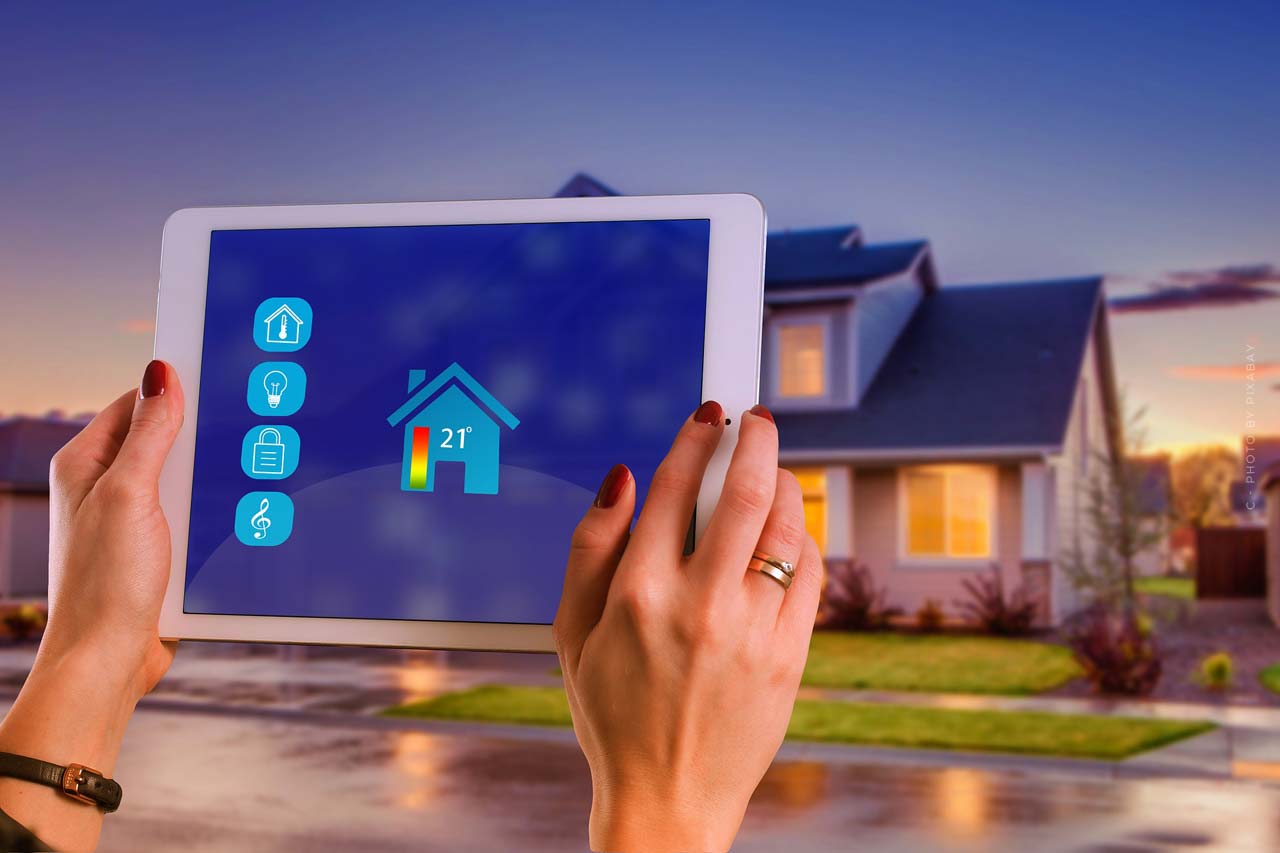Infrared heating: old building, new building and all the advantages and disadvantages
Infrared heating – Even though conventional heating systems have proven themselves, infrared heating is definitely an alternative that should be considered. Heating with electricity is generally considered expensive, but there are other relevant factors that make heating with electricity economical. You can find out which points are important and when heating with electricity is worthwhile in our detailed guide.
Heating with electricity through infrared rays
When building a house, there is always the question of the right heating system. Here there are many variants that need to be considered, and infrared heating is one of them. The model shows many advantages that adapt well to different living situations. But under what conditions is the installation of infrared heating worthwhile and how exactly does heating with electricity actually work?
Pleasant and healthy heat through infrared rays
The radiation of the infrared heating works differently than other heating systems, because the radiation does not warm the air in the room, but directly the body. This includes not only the human body, but also walls, ceilings or floors and even the furniture. The principle can be compared to sunbathing in winter. Due to this technique, the heat is already perceived by the body as pleasantly warm at low temperatures. This means that only low temperatures are necessary, thus saving electricity and heating costs. Another advantage of infrared heating is that the rooms do not have to be preheated for a long time so that the body is pleasantly warm. This provides comfortable warmth and thus increases the well-being and health.
Installing infrared heating – low installation work & low costs
The installation for an infrared heater is very simple. All that is needed are the heating elements in the room and also a power socket nearby. Other heating systems require pipes that need to be laid throughout the house, as well as boilers, hot water tanks and the radiators that need to be connected. This incurs installation and material costs and labour wages for tradesmen. With infrared heating, depending on the model (wall-mounted, ceiling-mounted, floor-standing or suspended), no or only minimal installation work is required. The costs for installation are therefore significantly lower than the costs for the installation of other heating systems.
The durability of infrared heaters also compares favorably to other heating systems. Most heating systems require regular maintenance to maintain performance. This incurs not inconsiderable costs for repair and maintenance, which should be included in long-term planning. Infrared heating is generally considered to be very cost effective in this area. It has a long life and does not require maintenance, as it has a very simple structure and the few components are not susceptible to damage.
Installing infrared heating as a supplement to other heating systems
Especially in old buildings, infrared heating offers a good addition to already existing heating systems. When expanding within an already existing heating system, it is usually difficult to lay new pipes, as this is time-consuming and expensive. An alternative is offered here by infrared heating, which can heat additional rooms in combination with the original heating system, and this simply at the socket. The low installation effort and the low initial costs attract builders and property owners. The low maintenance costs compensate for the relatively high operating costs and speak for infrared heating. But also with the occasional heating of rooms the infrared heating is a good alternative. The short time for preheating and the individual use of the system is advantageous for heating certain rooms only rarely or on certain occasions.
Installing infrared heating as the sole heating system
In new construction, heating alone with infrared heating is not a problem. The modern insulation that is installed during construction provides sufficient heat in the rooms. In old buildings, the whole thing looks a little different. Here the infrared heating is worthwhile as a sole heating system only under certain conditions, so that the heat is not lost, the building must have a certain insulation. The better the insulation of the building, the more lucrative the use of infrared heating. When renovating and refurbishing an old building, it is no problem to strengthen the insulation and install an infrared heating system.
Tip! Heating system in comparison
Save up to 55% costs (heat energy)? Tip! Not only already, but practically? Save energy with the heating system in your property. Use the next time for renovation or your upcoming new building. Here you will find our guide heating systems: solar, oil, gas, heat pump, pellets in comparison and as extra, state subsidies. Continue reading here:
Advantages and disadvantages at a glance
Advantages of infrared heating
Infrared heating is a worthwhile alternative to other conventional heating systems and offers a number of advantages for both old and new buildings.
Rapid feeling of warmth throughout the room despite low temperatures
Infrared heating warms rooms not through the air, but by infrared rays directly warming the body. The body stores this heat and carries it around with it, whereby the heat is perceived as the same in the entire room. Due to the heat storage in the body, low room temperatures are sufficient to create pleasant comfortable temperatures.
Healthy indoor climate for allergy sufferers
Unlike conventional heating systems, infrared heating does not stir up dust, which keeps the dust concentration in the air low. For dust, animal hair but also pollen allergy sufferers, the air is easier to breathe and also asthmatics can breathe easier. A spreading of allergy substances in the room is avoided, which leads to less dust spreading and thus cleaner air.
Positive effect on the body
The infrared heater warms the body through radiant heat from IR-A infrared radiation. This radiation penetrates a few millimetres into our skin and thus increases the tissue temperature. We feel a pleasant warmth through this technique, comparable to sunbathing. The increased tissue temperature dilates the blood vessels and promotes blood circulation. Comparable to a red light treatment, the infrared rays can have a tension-relieving effect and thus be beneficial to health in the case of muscle complaints or back pain.
Variable and advantageous costs
The purchase costs for an infrared heater are very low. Only the heating panels are needed and a power outlet. Compared to other heating systems where many materials and installation costs are incurred, the infrared heating is probably the cheapest in the purchase.
When using an infrared heater, heating costs are only incurred when heating is actually taking place, i.e. only when it is switched on. The less heat is needed, the lower the costs are.
Since the body already feels the low radiant heat of the infrared rays as pleasant and stores them, the heater does not have to run at high temperatures like other models to create a comfortable indoor climate. The operating costs can therefore be kept as low as possible.
Since the infrared heating consists of few and simple components that are not susceptible to malfunctions, the infrared heating has a long life and low maintenance costs.
Disadvantages of infrared heating
But infrared heating also has some disadvantages that property owners and builders need to consider before making the purchase.
High costs for electricity and operating costs
Heating with electricity is comparatively rather expensive. Electricity prices fluctuate constantly, which means that the operating costs for infrared heating also vary. To keep electricity costs as low as possible, the property should have good insulation so that as little heat as possible is lost to the outside.
Carbon dioxide emissions and environmental friendliness
Heating with electricity is not environmentally friendly. It even produces higher carbon dioxide emissions than conventional heating systems. By combining it with green electricity or a photovoltaic system, the eco-balance can be improved, but even then there is still a high environmental impact.
Room temperature difficult to determine
The room temperature is difficult to measure because it is perceived by our own body as warmer than it actually is. The temperature of the room is therefore always somewhat lower than our sensation. Thus, the temperature of the room can be determined but not the temperature we feel.
Heating guide: types, prices & comparison
Heating & Types – The topic of heating is not only interesting for builders, but also for property owners. After all, heaters are not only necessary in a property, they are also required by law. Which types of heating are there, how do they have to be maintained and are there legal subsidies for the construction of certain types of heating or do the costs have to be paid completely by the owner? Especially when building a house or renovating and modernising, the heating system plays a decisive role, because a large part of the later running costs depend on it, for you or for your tenants.
When deciding on a heating system, a number of things need to be considered, as there are major differences. Depending on the property, it must be decided individually which system is best suited to efficiently heat the entire property. The systems differ not only in environmental friendliness, but also in efficiency and price. Solar, oil, gas, heat pump, pellets:







